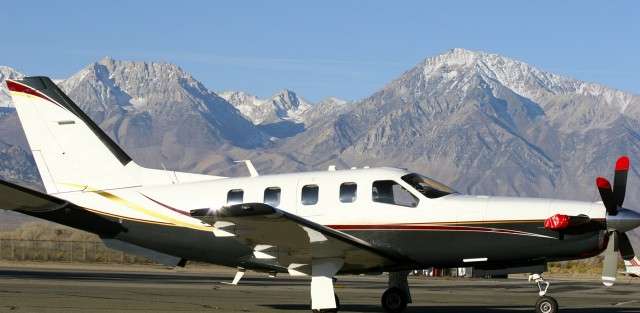King Air 100 Charter Plane Information
Improving upon the popular Beechcraft King Air 90, the King Air 100 is a twin-engine aircraft that dominates the today’s turboprop market. The most notable improvements to the King Air 90 model are the King Air 100’s increased:
- Cabin size
- Wing area
- Wing span
Additionally, Beechcraft improved the engine output power and range of the 100 series. The King Air 100 has the ability to hit speeds of 307 mph and can cruise more than 1,325 nautical miles without stopping. Charter a King Air 100 for your business trip from San Francisco to Van Nuys and return home the same day. The typical cabin configuration of the King Air 100 allows for six to eight corporate passengers to ride in complete comfort. The most common arrangement calls for seven seats, including the belted potty. Plus, this aircraft is extremely economical. Its price-per-hour is unmatched by any private jet. For those in need of affordable corporate travel solutions, the King Air 100 is a solid choice.
A Proven Performer
Beechcraft first introduced the King Air 100 to the general aviation community in 1969. It was powered by a pair of Pratt & Whitney Canada PT6A-28 turboprop engines. The original model lasted until 1972, when Beechcraft decided to upgrade it to the King Air A100. While it kept the same Pratt & Whitney power plants, this variant featured several key improvements, including:
- Increased fuel capacity
- Four-bladed propellers for reduced engine noise
- Increased MTOW (11,500 pounds)
A second update occurred in 1979, when Beechcraft unveiled the B100, which featured a pair of Garrett TPE-311 engines. Both engine types have their advantages. While the Pratt & Whitney engines are renowned for performing well in colder climates, the Garrett power plants offer a higher cruise speed and more fuel efficiency. Additionally, the B100 version provides a marginally higher MTOW (Maximum Takeoff Weight) of 11,800. The King Air 100 can take off from runways as short as 3,200 feet, and it flies at a service ceiling just shy of 25,000 feet. As an added bonus, it can land on dirt airstrips when required. Regardless of which model you choose, you can rest assured that these aircraft are workhorses. In total, Beechcraft built nearly 400 of them between 1969 and 1983. More than 100 remain in service today.
Cargo Carrying Capacity
While the King Air 100 is popular as a corporate commuter, it also performs admirably as a freight aircraft. In fact, there are aftermarket modification kits that enhance its cargo-carrying capacity, including:
- Rear cargo door that can accommodate large pallets
- Heavy-duty floor structure
- Cabin cargo liner
- Crew hatch
There’s even an option for a belly cargo pod that offers an additional 40 cubic feet (500 pounds) of storage capacity. Without it, the King Air 100 still offers a considerable 62 cubit feet of storage located in the aft. With its pressurized and relatively quiet cabin (thanks to the four-blade propeller), the King Air 100 is an ideal choice for rapid commuter transport. The cabin interior measures:
- 16 feet, eight inches long
- 4 feet, 9 inches tall
- 4 feet, 6 inches wide
A Collins avionics suite comes as standard equipment on the King Air 100 series, giving it easier access to a wide range of airports.
Beechcraft King Air 100: Aircraft Charter Specifications
| MANUFACTURER | Beechcraft/Raytheon |
|---|---|
| CABIN HEIGHT | 4.8 ft |
| CABIN WIDTH | 4.5 ft |
| CABIN LENGHT | 16.8 ft |
| BAGGAGE CAPACITY | 44 cu ft |
| CRUISE SPEED | 305 mph |
| CRUISE ALTITUDE | 31,000 ft |





















